Abstract
In 1988-89, the use of menstrual sanitary products was surveyed among 699 white, 477 black, and 425 Mexican American women to detect age and racial or ethnic differences in product use that might explain the differences in the incidence of toxic shock syndrome (TSS) in these demographic categories. Forty percent of the women had never used tampons. Significantly more whites used tampons alone (26 percent) or with pads (36 percent) than did blacks. Proportionately more blacks used tampons alone (16 percent) or with pads (27 percent) compared with Mexican Americans, 11 percent of whom used tampons alone and 21 percent of whom used tampons and pads. Since a substantial proportion of black women used tampons, racial-ethnic variations in use patterns alone cannot completely explain the low incidence of TSS among black women. Tampon use started in the early teen years, but women in the age group 20-29 had the highest frequency of use of tampons either alone (26 percent) or with pads (33 percent). These percentages suggest that age-related differences in product use may not explain the age-related differences in the incidence of TSS. Fear was the most common specific reason for not using tampons in response to information about TSS. Decreased use of tampons in response to information about TSS was reported by 39 percent of whites, 50 percent of blacks, 46 percent of Mexican Americans, and by 36 percent of women less than 19 years, 41 percent of 20-29-year-olds, and 47 percent of women 30 years and older.
Full text
PDF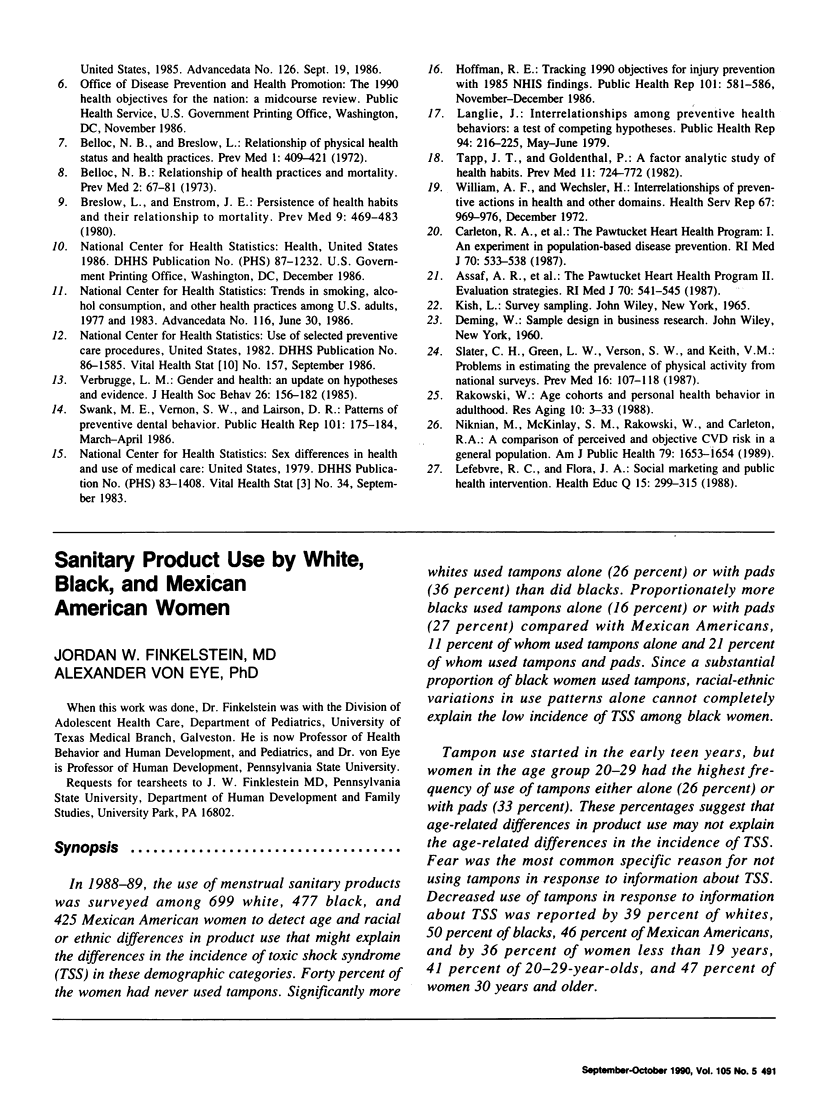
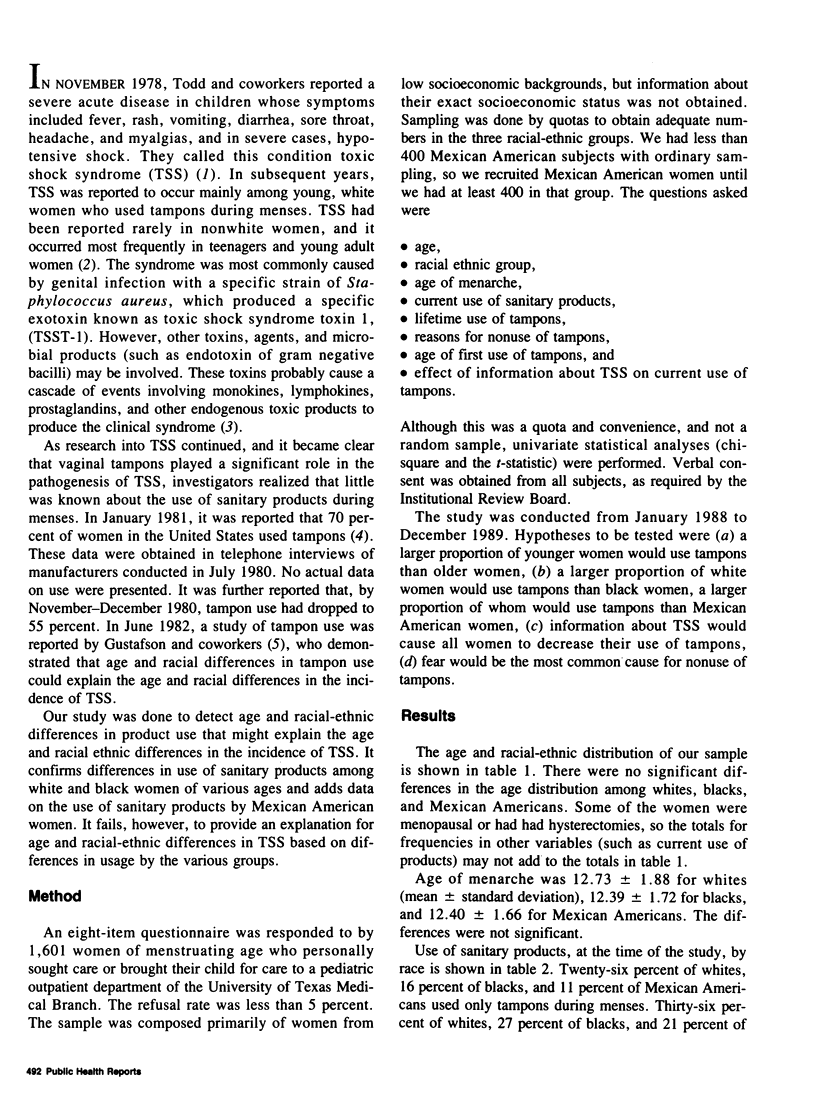
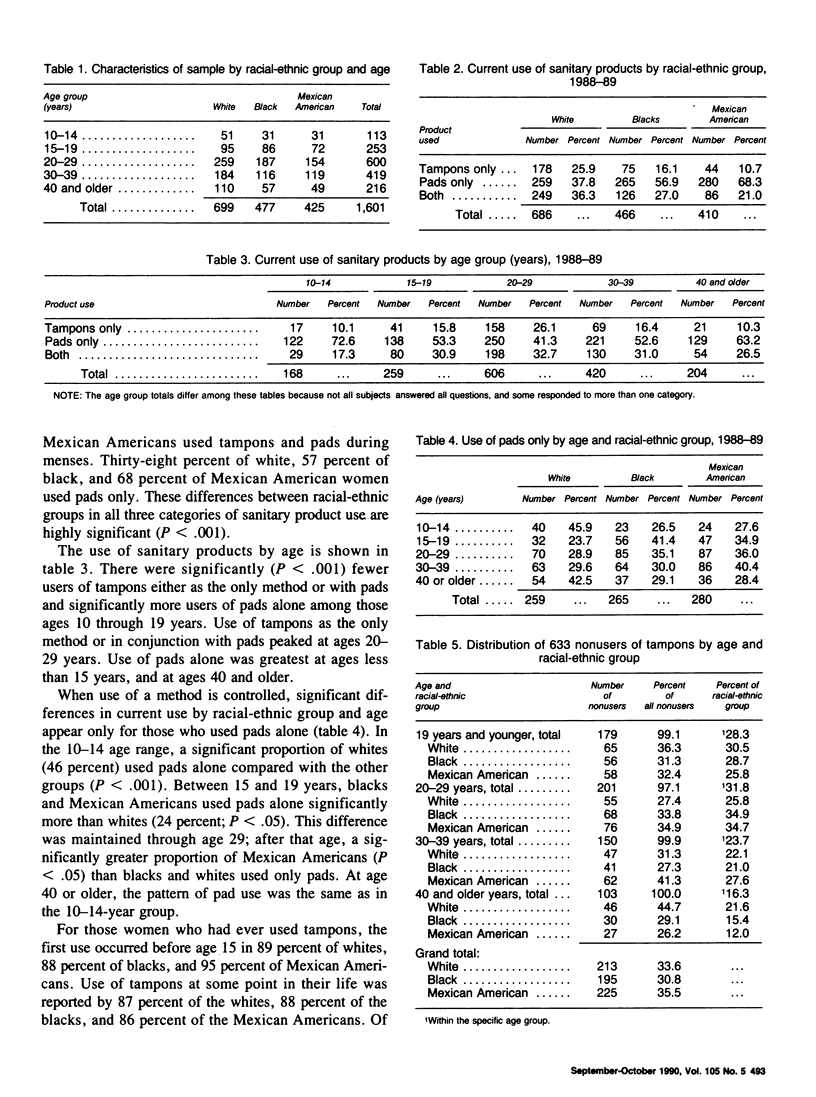
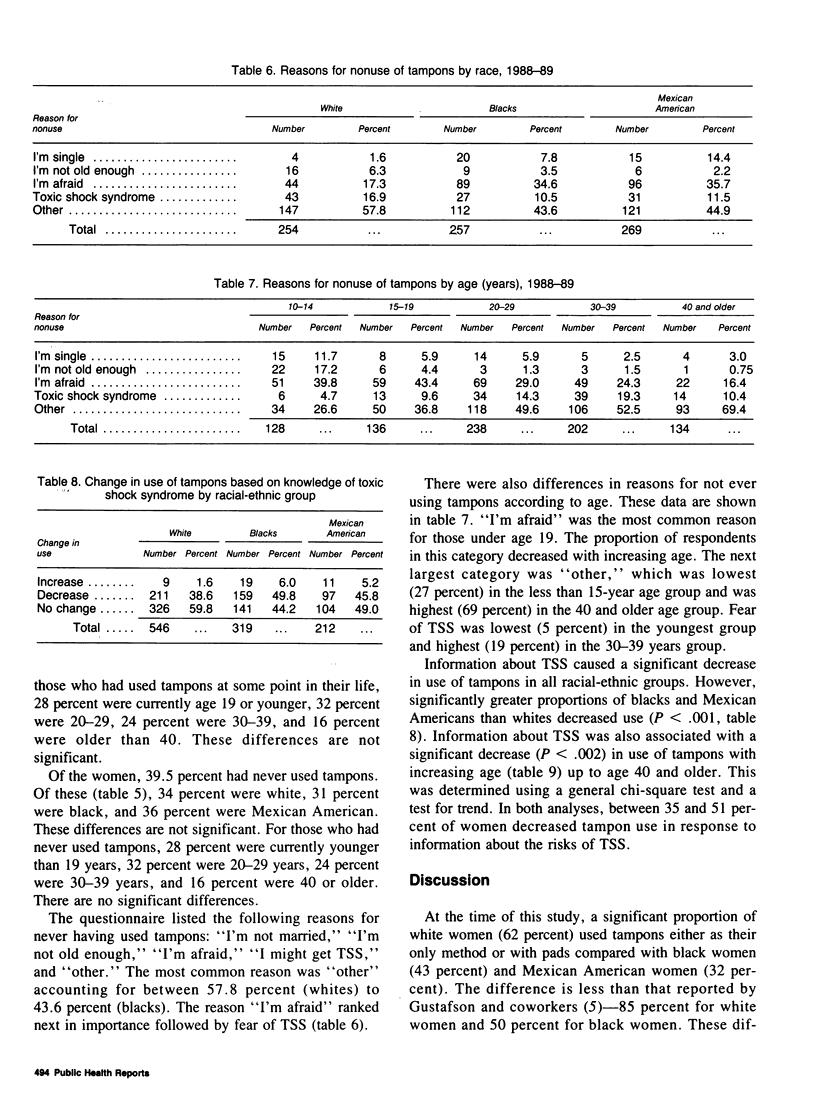
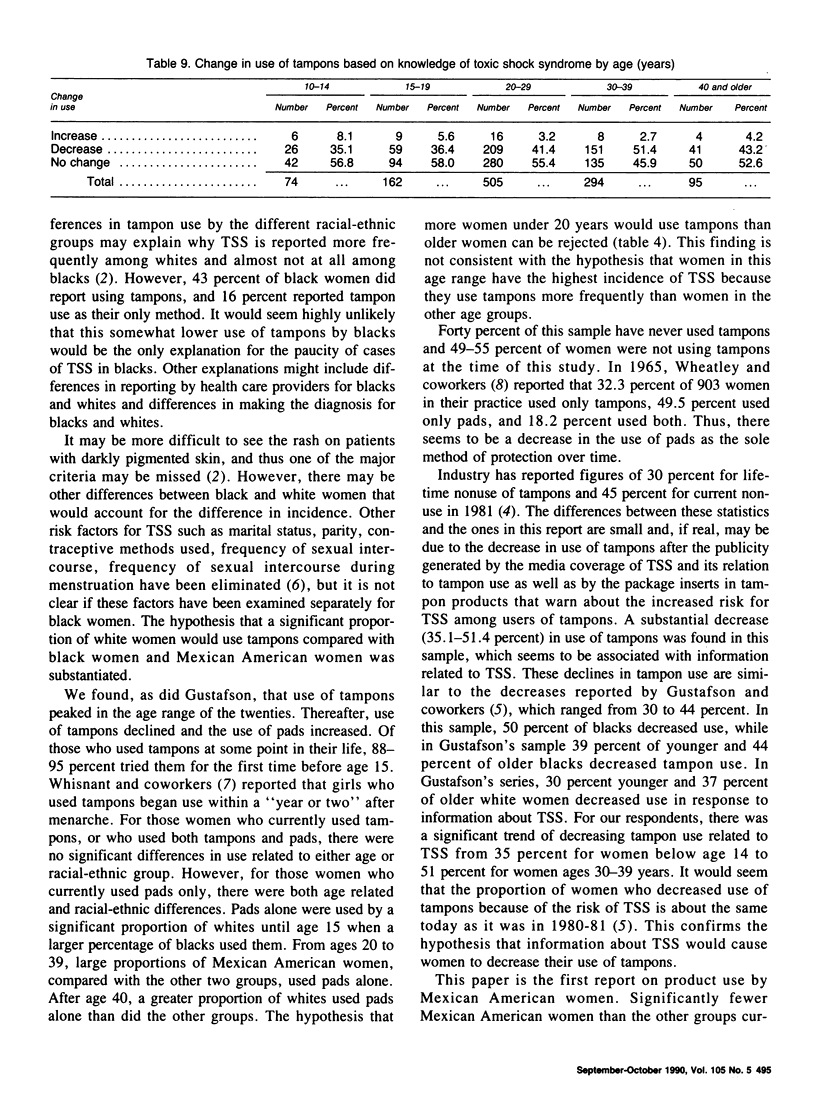
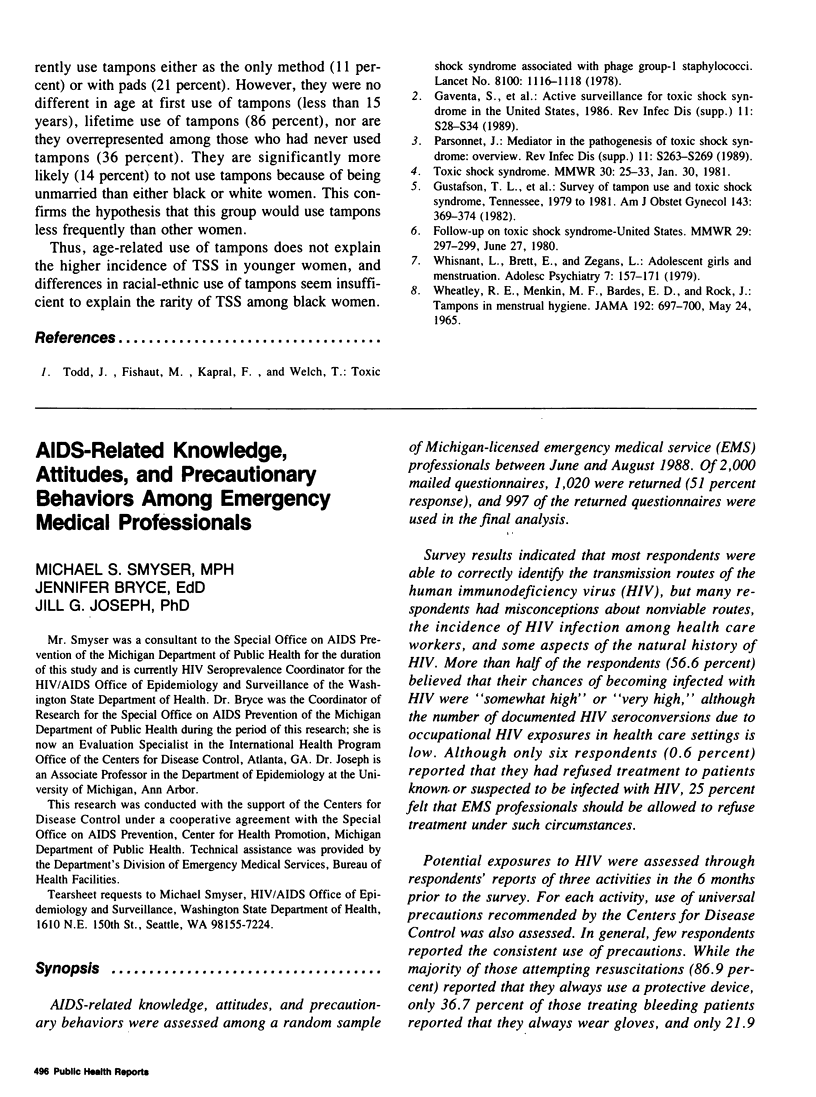
Selected References
These references are in PubMed. This may not be the complete list of references from this article.
- Gaventa S., Reingold A. L., Hightower A. W., Broome C. V., Schwartz B., Hoppe C., Harwell J., Lefkowitz L. K., Makintubee S., Cundiff D. R. Active surveillance for toxic shock syndrome in the United States, 1986. Rev Infect Dis. 1989 Jan-Feb;11 (Suppl 1):S28–S34. doi: 10.1093/clinids/11.supplement_1.s28. [DOI] [PubMed] [Google Scholar]
- Gustafson T. L., Swinger G. L., Booth A. L., Hutcheson R. H., Jr, Schaffner W. Survey of tampon use and toxic shock syndrome, Tennessee, 1979 to 1981. Am J Obstet Gynecol. 1982 Jun 15;143(4):369–374. doi: 10.1016/0002-9378(82)90074-6. [DOI] [PubMed] [Google Scholar]
- Parsonnet J. Mediators in the pathogenesis of toxic shock syndrome: overview. Rev Infect Dis. 1989 Jan-Feb;11 (Suppl 1):S263–S269. doi: 10.1093/clinids/11.supplement_1.s263. [DOI] [PubMed] [Google Scholar]
- Todd J., Fishaut M., Kapral F., Welch T. Toxic-shock syndrome associated with phage-group-I Staphylococci. Lancet. 1978 Nov 25;2(8100):1116–1118. doi: 10.1016/s0140-6736(78)92274-2. [DOI] [PubMed] [Google Scholar]
- WHEATLEY R. E., MENKIN M. F., BARDES E. D., ROCK J. TAMPONS IN MENSTRUAL HYGIENE. JAMA. 1965 May 24;192:697–700. doi: 10.1001/jama.1965.03080210041009. [DOI] [PubMed] [Google Scholar]


